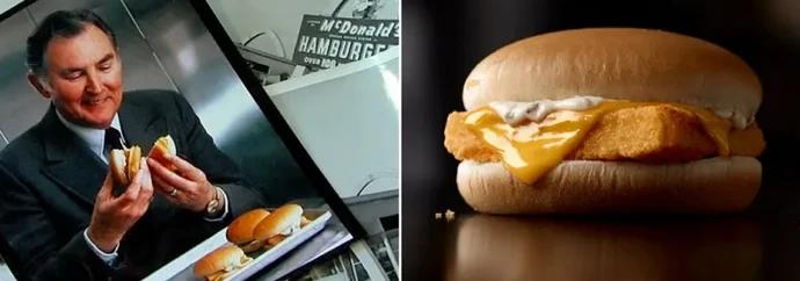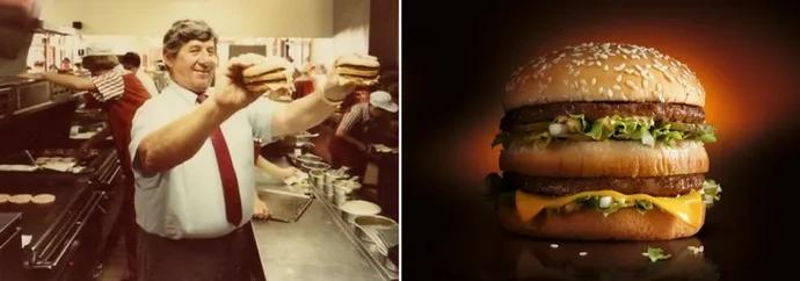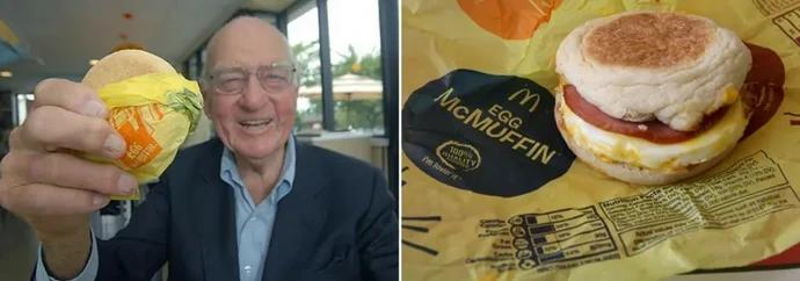What Technology Platforms Can Learn from McDonald’s

With 40,000 outlets in 120 countries serving almost 70 million customers every day, McDonald’s is one of the most valuable brands in the world. The Golden Arches and Ronald McDonald are symbols recognized everywhere, and Justin Timberlake’s song “I’m Lovin’ It” is one of the most famous jingles of all time.
McDonald’s menu items are recognized across the globe, too. If you’ve never eaten a Big Mac, Filet-O-Fish, or McMuffin, chances are you know someone who has. These handheld meals are almost as famous as the McDonald’s brand itself. McDonald’s wouldn’t be the same without them.
Which makes it almost impossible to believe that none of these popular fast food items were invented by McDonald’s Corporation. The stories of their invention contain nuggets (sorry) of advice useful for those building developer ecosystems around their technology platforms.
The McEcosystem
McDonald’s isn’t a chain of fast food stores — it’s a fully formed global platform and ecosystem. Of the 36,899 McDonald’s locations worldwide, 31,230 are owned by franchisees. The McDonald’s platform provides a global brand, operating system, and financial tools to help these franchisees become successful.
Franchisees are to McDonald’s as developers are to Facebook or Salesforce. Franchisees and developers are “platform partners.” By taking care to listen to them, partners can be the source of revolutionary ideas.
Filet-O-Fish Fridays
Lou Groen was full of optimism when he became a McDonald’s franchise owner in Cincinnati, Ohio, in 1959. His optimism didn’t last long. Daily sales rarely topped $300, barely covering costs. Even worse, on Fridays during March his daily takings dropped to $75. Most of the local population were Catholic, and during Lent, Catholics don’t eat meat on Fridays. Awkward for Lou, as every McDonald’s sandwich contained a beef patty.

Desperate for a solution, Lou noticed fish sandwiches being served at a local restaurant. He took the idea of the “Filet-O-Fish” to Ray Kroc, President of McDonald’s, in 1961. Initial feedback was not good. “You’re always coming up here with a bunch of crap! I don’t want my stores stunk up with the smell of fish.”
Undeterred, Lou suggested the idea of “bake off” on Good Friday 1962, between the Filet-O-Fish and the “Hula Burger,” an idea which Ray preferred. By the end of the day, 6 Hula Burgers and 350 Filet-O-Fish were sold. By 1965 the Filet-O-Fish appeared on McDonald’s menus worldwide.
The Big Mac Index
After meeting Ray Kroc at a restaurant fair in 1955, Jim Delligatti started his first McDonald’s franchise in Uniontown, Pennsylvania, in 1957. With many steel mills in the area, Jim’s customers were manual laborers with larger appetites. Cheeseburgers weren’t satisfying enough for them. Jim needed a bigger burger.

Jim’s hunger-satisfying solution — two beef patties, a third bun, lettuce, pickles, onion, and “special sauce” — initially didn’t go down well with McDonald’s leadership. It took Jim two years to convince Ray Kroc that there was a market for the Big Mac. When it did launch, it was an overnight success.
Today, almost a billion Big Macs are sold every year in over 100 countries and “Big Mac” is even a popular economic term. The “Big Mac Index” is used by economists to measure the purchasing power parity (PPP) between two currencies, and makes “exchange-rate theory a bit more digestible.”
Herb’s Egg McMuffin
Any business with fixed costs — whether an airline or a restaurant — does all it can to cover those costs. For airlines, keeping aircraft airborne helps cover leasing costs. For restaurants, extended opening hours can achieve the same goal. Before the 1970’s, with no breakfast menu, McDonald’s franchisees had little reason to open beyond Lunch and Dinner. Covering costs was a challenge. But Herb Peterson had a solution.

In 1971 Herb, a San Diego-based McDonald’s franchisee, telephoned Ray Kroc and told him of his new crazy idea — a mysterious breakfast sandwich. Herb, knowing that Ray would reject it out of hand without even tasting it, refused to describe it in detail over the phone. It was in-person or nothing.
Eventually, Ray agreed to a tasting. Herb served up his invention, a toasted English muffin, with an egg formed in a Teflon circle, and a slice of Canadian bacon, dressed with a slice of cheese. It looked unusual, but the initial feedback was amazing. In his own words, Ray “tasted it, and I was sold. Wow!” Within ten years of the McMuffin’s launch, breakfast products accounted for almost 20% of McDonald’s sales.
How valuable is an idea?
Tangible benefits of platform ecosystems — whether McDonald’s or Salesforce — are easy to measure through calculating the Utility, Distribution, and Revenue impact of the platform tools and participants. Footfall or user growth can measure the Utility Value of the platform. Franchisee growth or reseller-driven installs can measure the Distribution Value of the platform. Revenue Value is easy to measure across both.
Measuring intangible ecosystem benefits is much harder. How do you measure the value of ideas? What happens if those ideas are ignored? What would the market value of McDonald’s be today without the idea of the Big Mac, the idea of the Filet-O-Fish, or the idea of the McMuffin?
What Technology Platforms Can Learn from McDonald’s
Lou Groen, Jim Delligatti, and Herb Peterson’s inventions — and Ray Kroc’s response to them — provides three valuable lessons to those of us building developer ecosystems and partnership teams to serve them.
1. Trust the ecosystem to solve niche problems
McDonald’s, based on the West Coast, might never have known Roman Catholic Fridays were an East Coast challenge if Lou Groen never shared his problem and solution with them. A feature that makes little sense for customers in San Francisco might make a lot of sense for customers in Sao Paolo. They probably have different needs. Know what you don’t know.
2. Be the voice of the ecosystem
Even with a personal relationship with Ray Kroc, it still took Jim Delligatti two years to lobby McDonald’s to approve his idea for the Big Mac. Imagine how tough that process would be today. Developer Partnerships teams have a responsibility to represent of the ecosystem, to communicate their ideas and needs to product and leadership teams. Be their voice internally.
3. Empower your ecosystem to share ideas
Herb Peterson was hesitant to share the McMuffin idea unless he could “demo” it in person to Ray Kroc, who had a reputation for shooting down ideas before they were born. Create an open dialogue and environment for sharing. Make time to brainstorm and collaborate with developers and partners. Share ideas and roadmaps with them. There is no such thing as a bad idea from a partner.
